- Daily & Weekly newsletters
- Buy & download The Bulletin
- Comment on our articles
Friends, Lovers, Partners: Exhibition on abstract artist duo Arp-Taeuber reveals life of influence and inspiration
European artists were at the heart of the wave of modernism that transformed early 20th culture and thinking. Encapsulating this experimentation and search for expression was one artistic couple whose fascinating life and career was set against the tumult of two world wars.
It was their mutual influence on each other’s creativity that forms the centre of the major exhibition Hans/Jean Arp & Sophie Taeuber-Arp. Friends, Lovers, Partners, showing at Bozar until 19 January.
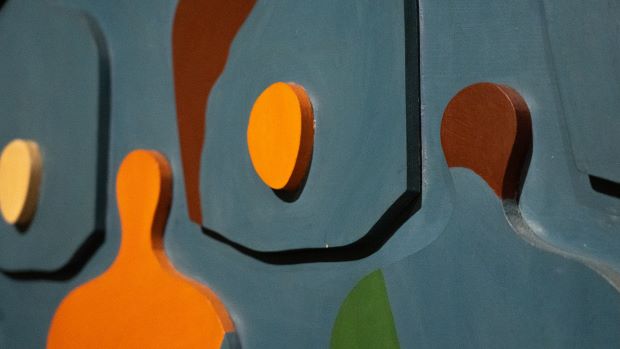
More than 250 works attest to the duo’s avant-garde creativity and their pioneering role in abstract art. Encompassing paintings, sculptures, collages, drawings, textiles and jewellery as well as photographs, books and archive documents, the show is an important international retrospective of their art.
It is also a lively presentation of Sophie Taeuber-Arp’s pivotal contribution to modern art and design, including her historically-overlooked body of applied arts. Once denigrated and now celebrated, the quality of her craftsmanship establishes her as one of the foremost abstract artists and designers of the 1920s and 30s.
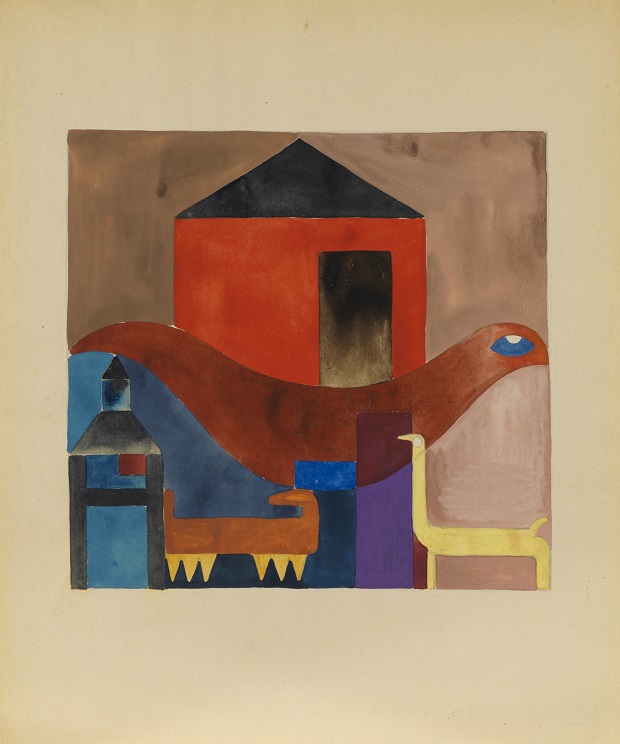
From embroideries with striking designs to colourful gouaches and geometric paintings with horizontal lines and shapes flying in different directions, she was a master of precision and artistry. The multidisciplinary nature of her work is highlighted in textiles, marionettes and jewellery – all imbued with this strong and confident sense of design.
Yet Taeuber-Arp’s reputation was overshadowed by her husband’s career following her untimely and tragic death in 1943. While focusing on the couple’s prolific and fruitful teamwork and presenting a section on Arp's artistic association with Belgium, the exhibition aims to correct this oversight.
It was in a Zurich art gallery in 1915 that the pair first met. Alsatian artist Hans Arp (later to be known as Jean) was exhibiting his avant-garde paintings and new experimental ventures into tapestries and embroideries. Swiss-born Sophie Taeuber was already a confirmed textile artist who had studied arts and crafts in Germany and explored expressionist dance.
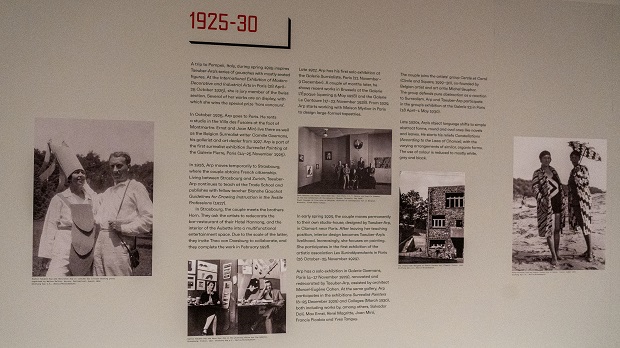
At the entrance to the show, a timeline lays out their intertwining lives, while in successive rooms their work is chronologically displayed side by side.
They were both part of the Swiss-born Dada movement, a radical anti-nationalistic reaction to world war one. Examples of their ‘new’ art included embroideries and works on paper of abstract forms.
“They shared the same conception of art, namely that there was no hierarchy between the ‘fine arts’ and the applied arts, between major and minor art, between the visual and the functional,” says Walburga Krupp, co-curator of the exhibition with Bozar.
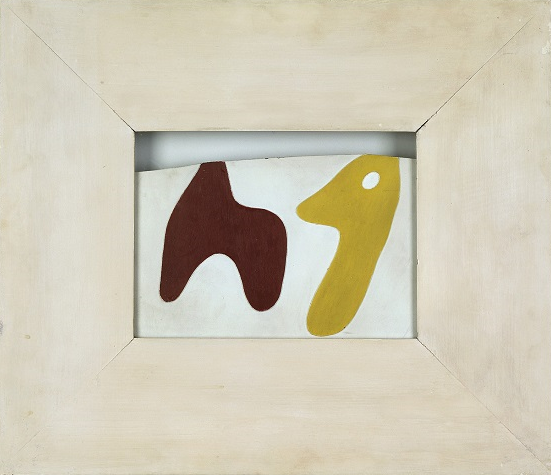
Arp started developing his biomorphic shapes that would later characterise his reliefs and sculpture; Taeuber-Arp drew on traditional arts to make covetable pillow covers and gorgeous beaded bags and jewellery of native art and African inspiration, as well as geometric playfulness.
In 1918, she made a series of inventive marionettes for a play about psychoanalysis, the ‘King Stag’. Replicas of the original fragile puppets are suspended in a display case: painted segmented cylinders, cones and tubes that echo her geometric patterns represent the cast of characters. They are followed by fine painted wood-turned heads, including a representation of Arp that was said to be an accurate representation, points out Krupp.
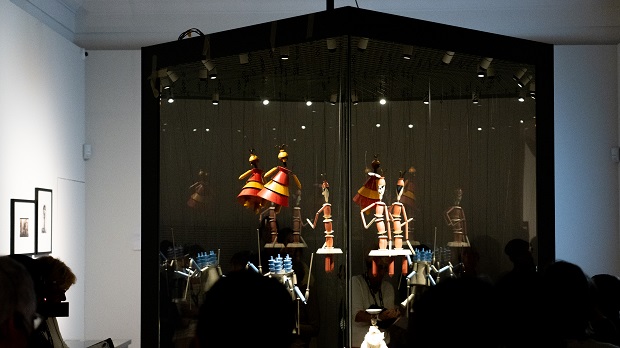
Under the influence of Arp, she moved into painting – her brushwork displaying a trademark precision. Meanwhile, he explored a form of object language, an abstract figuration that endeared him to the Surrealists and which extended beyond drawings and paintings into poetry. Sometimes it is difficult to distinguish his vibrantly-painted reliefs from her work; she frequently contributed to his creations and they each pushed the boundaries between different artistic disciplines.
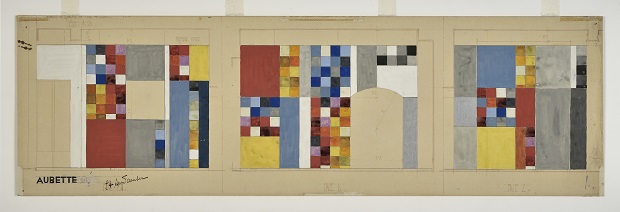
In 1926, they moved to the Paris suburbs, a house in Clamart designed by Taeuber-Arp that became a hub for avant-garde artists, including Miro, Joyce and Duchamp. The couple adopted French nationality and enjoyed a productive artistic period. They were commissioned to design the interior of the Aubette café/restaurant/ballroom in Strasbourg, joined by Dutch artist Theo van Doesburg in the project that was a landmark of abstract art.
Their experimentation continued with Arp turning to three-dimensional works, including a technique he invented using torn paper, as well as plaster sculptures. Taeuber-Arp produced gouaches and paintings in which the previous grid form is eschewed in favour of circles, where the sense of movement dominates the visual imagery.
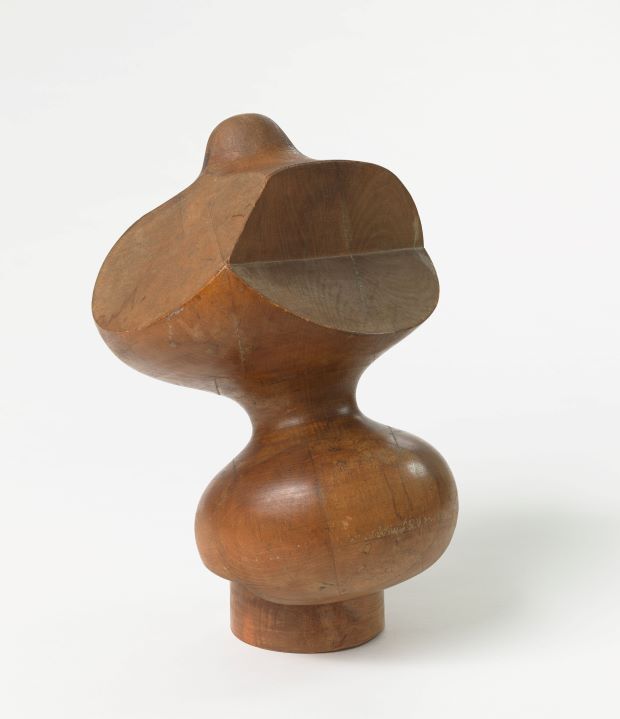
The ultimate symbol of the couple’s mutual influence was a series of four-hand duo sculptures, a complete sublimation of their individual identity. The lathe-turned wooden Marital Sculpture resembles a human body with round curves and angular incisions. It exemplifies the delicate yet dynamic design equilibrium at play in their work.
The outbreak of world war two meant there were few opportunities to exhibit or publish their works. They settled in the south of France where the lack of materials required a resourcefulness; exploiting wrapping paper and using coloured pencils to continue their artistic expression.
Unable to gain Swiss nationality, they nevertheless sought refuge for a short period in the country, staying with family and friends. After missing the last tram, Taeuber-Arp spent a cold January night at the home of a fellow artist. A faulty stove resulted in her death from carbon monoxide poisoning. She was 53.
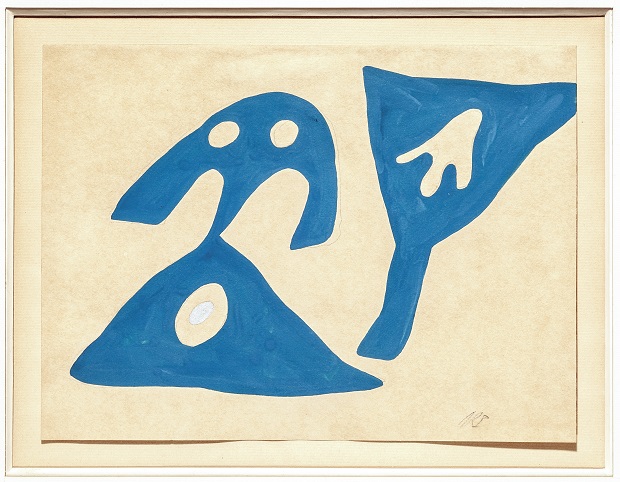
A period of intense grief followed for Arp. He produced a catalogue raisonné of her work and wrote poetry in her memory. The final room of the exhibition is devoted to his output from this difficult period, including re-creations of works based on her drawings.
Despite Arp’s efforts to keep his wife’s art alive, her name dimmed in the ensuing decades. Meanwhile, his reputation grew internationally, especially for his award-winning innovative and influential minimalist sculpture. The rise of feminism in the late 70s led to a Taeuber-Arp revival, although the applied art aspect of her work hindered her notoriety, explains Krupp.
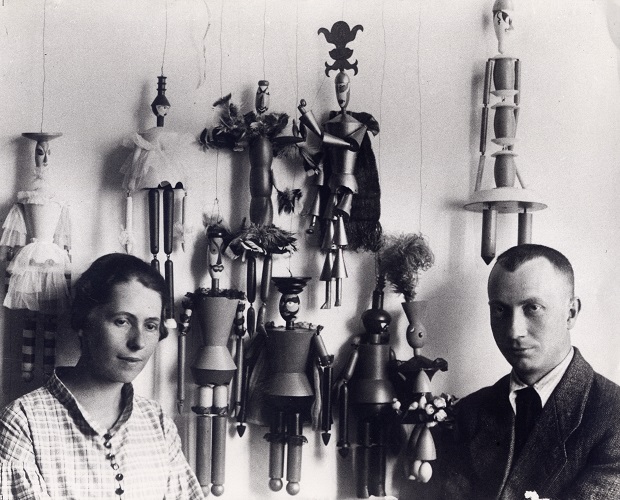
The change in fortune was also due to the vagaries of the art market. “In latter years, there have been many exhibitions on her and he has been rather forgotten. It’s fascinating to see American critics emphasise their textile work after overlooking for many years that he also did that kind of work,” she adds, pointing out that he once wrote after his wife’s death that “there was only one art”.
Hans/Jean Arp & Sophie Taeuber-Arp. Friends, Lovers, Partner
Until 19 January
Bozar
Rue Ravenstein 23
Brussels
Photos: (main image) Sophie Taeuber-Arp, tapestry 2024, Fondazione Marguerite Arp (FMA) ©Roberto Pellegrini, Bellinzona; ©Julie Pollet-0202Sophie Taeuber-Arp embroidery on loan from the Aargauer Kunsthaus Aarau ©Peter Schälchli; ©Julie Pollet; Hans/Jean Arp Chair and bottle 1926 FMA ©SABAM Belgium; ©Julie Pollet; Sophie Taeuber-Arp Aubette ©Musées de la ville de Strasbourg; Hans/Jean Arp and Sophie Taeuber-Arp, Marital Sculpture ©SABAM Belgium, photo Alex Delfanne; Hans/Jean Arp, Man and Woman ©SABAM Belgium, photo Fabien de Cugnac; Sophie Aaeuber and Hans Arp ©SABAM Belgium 2024



















